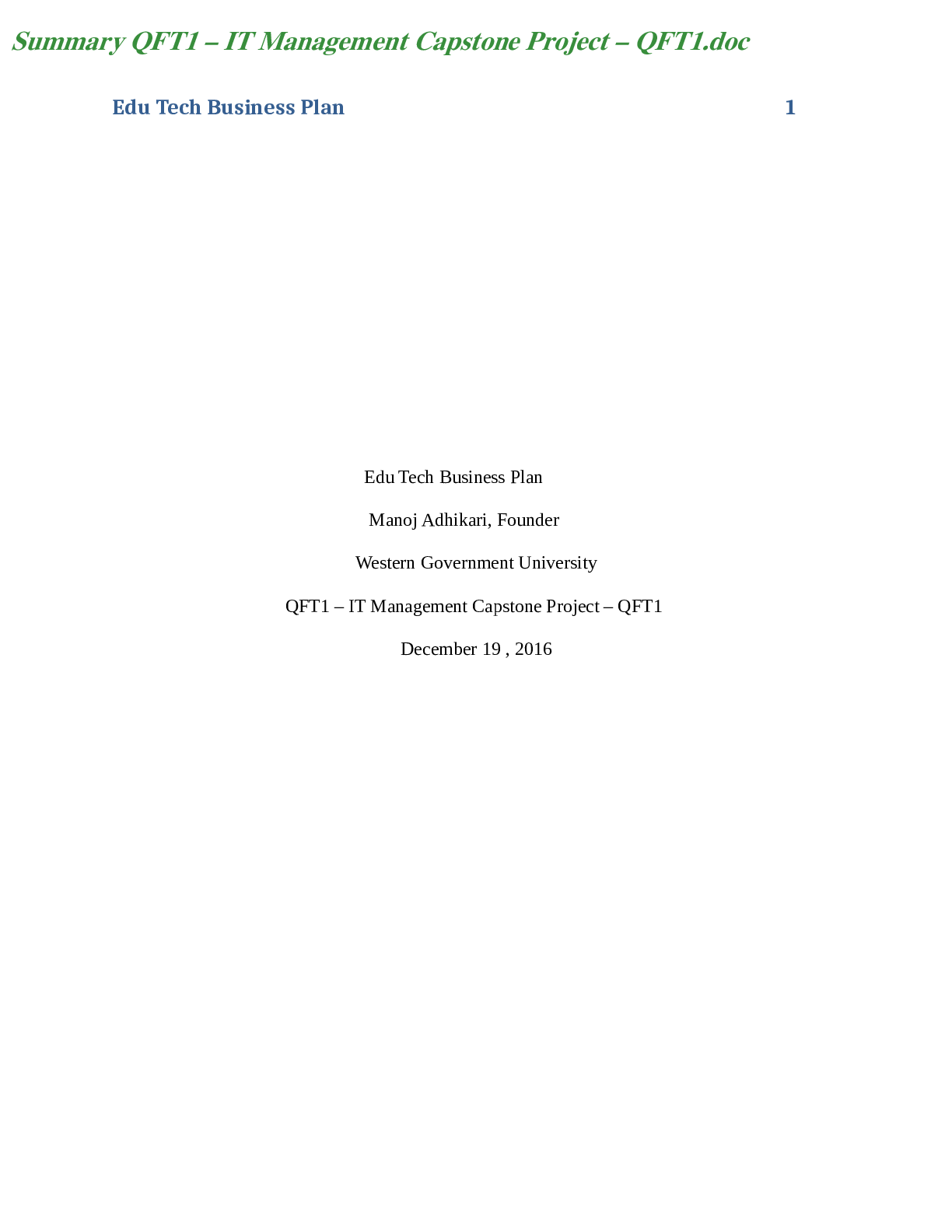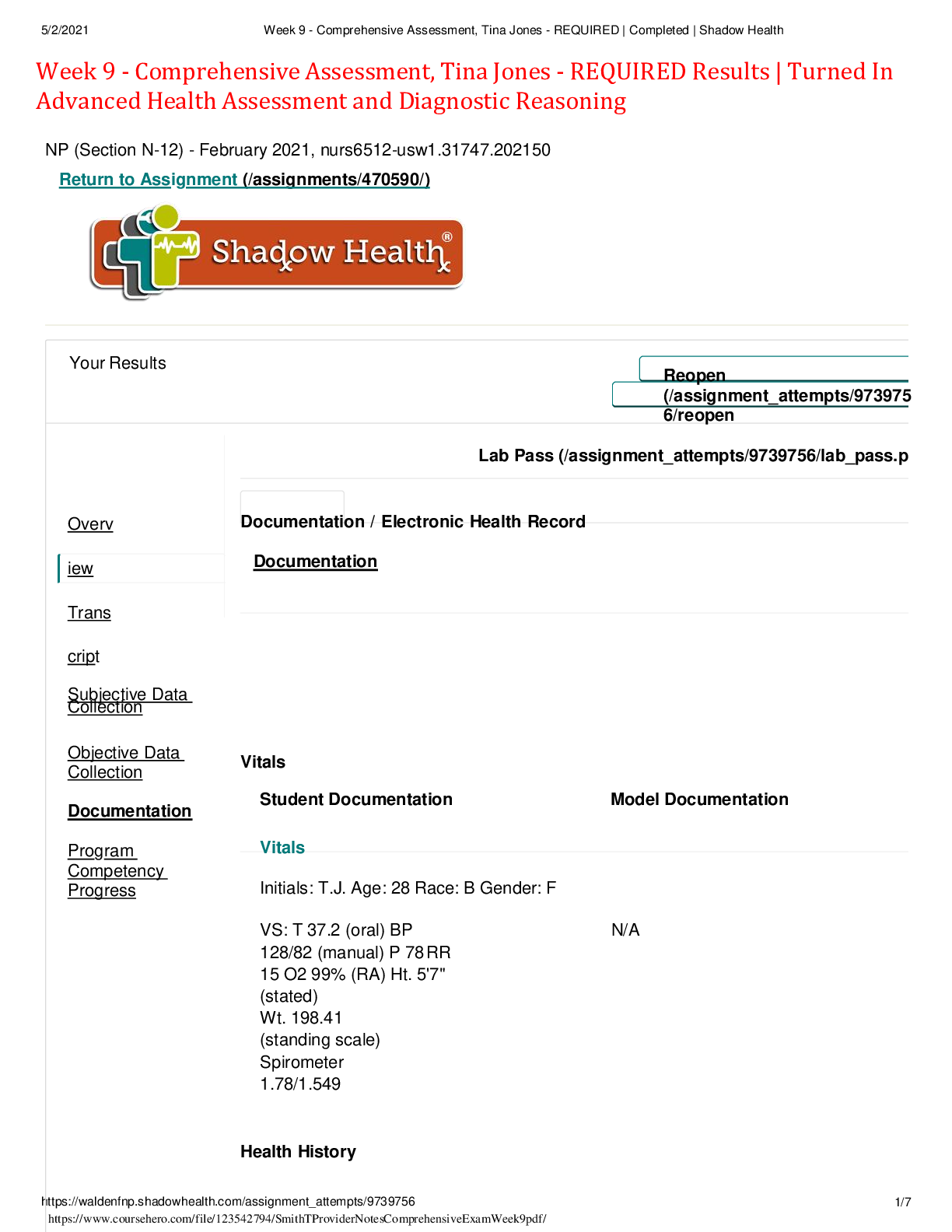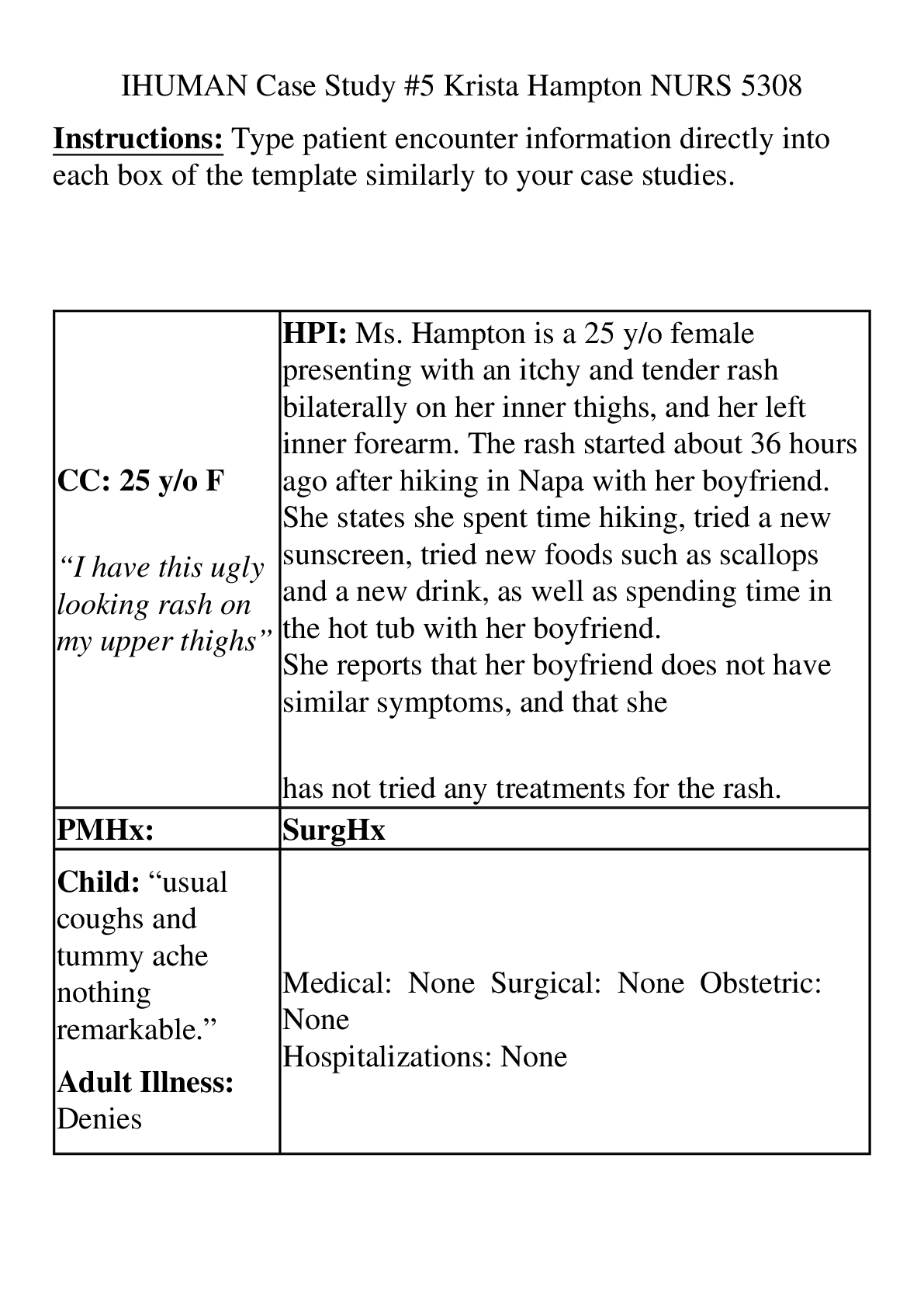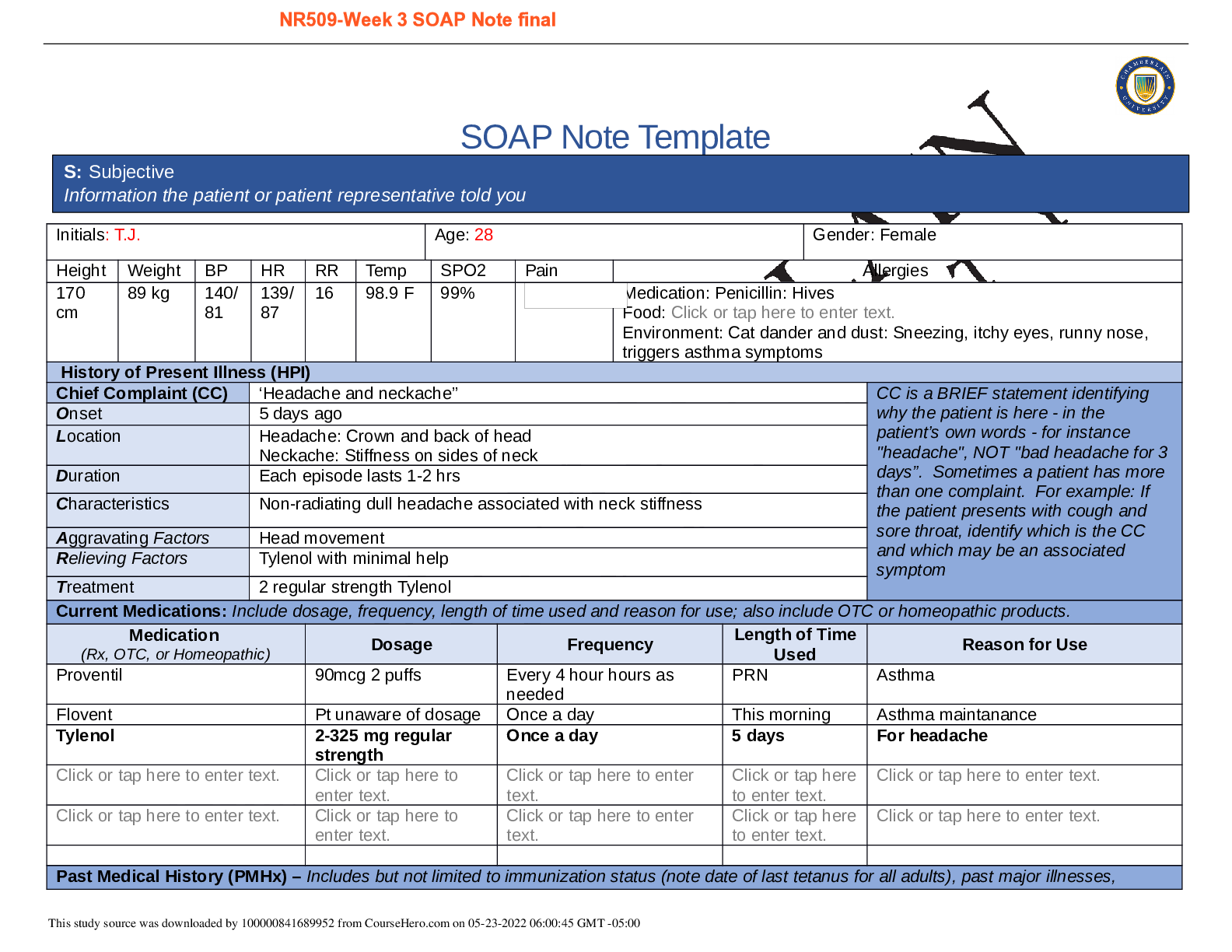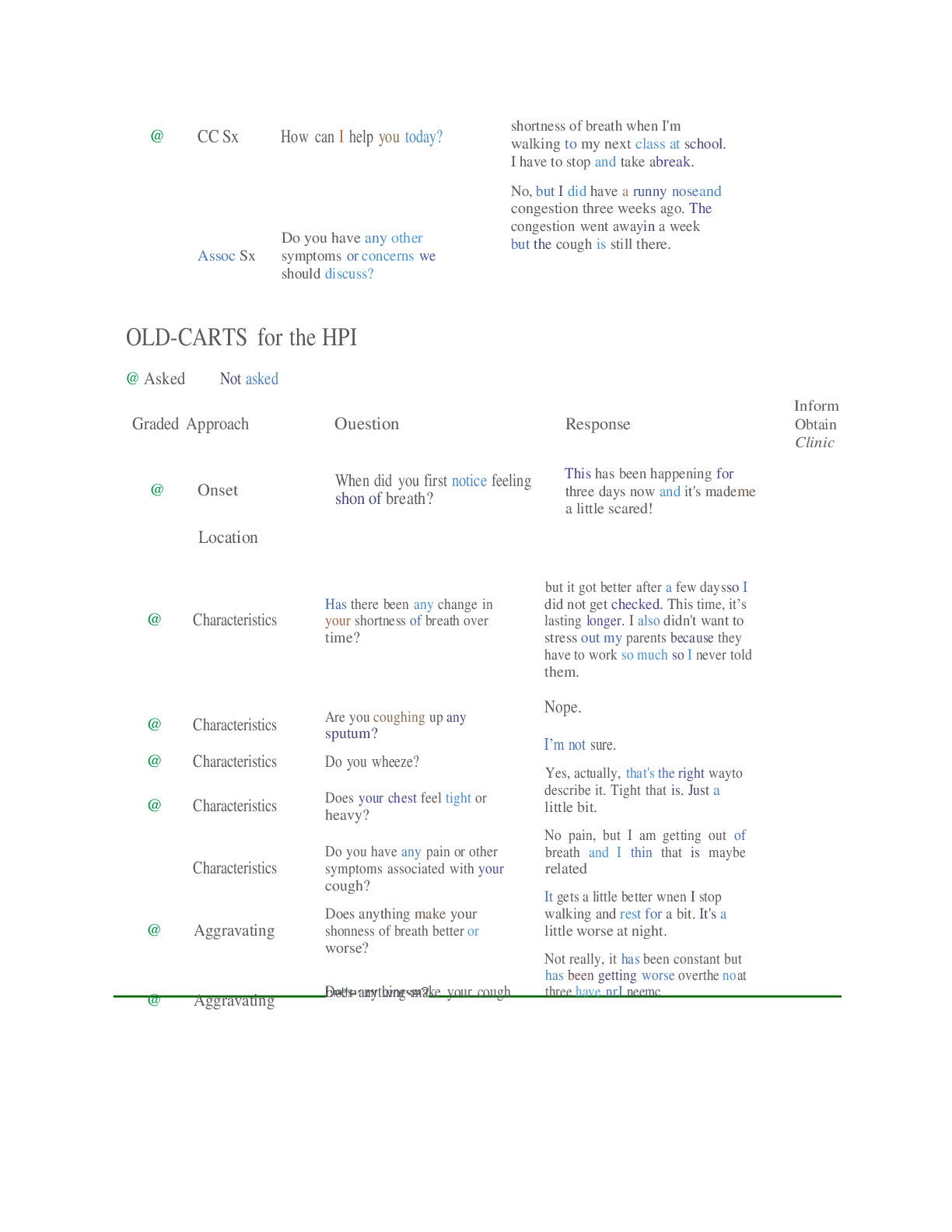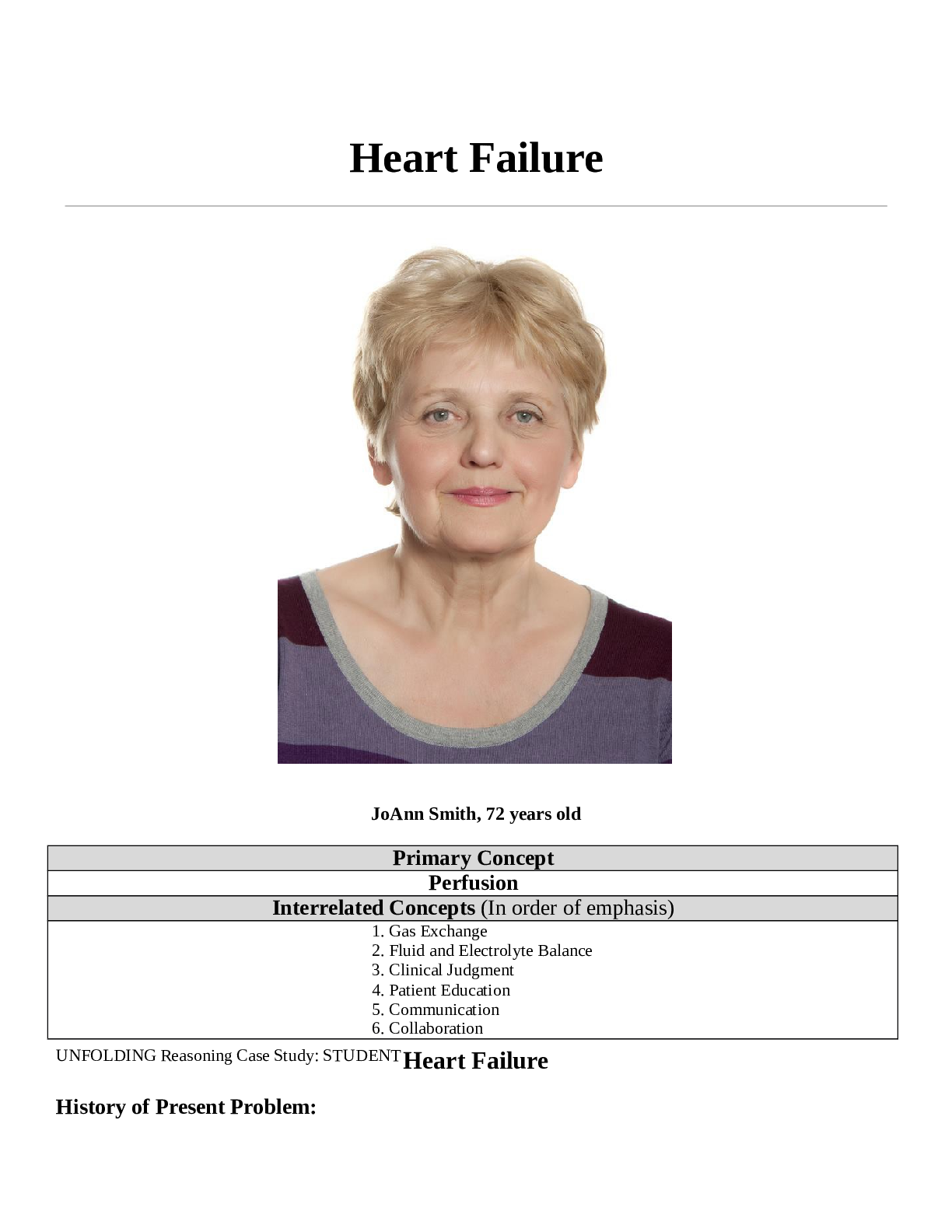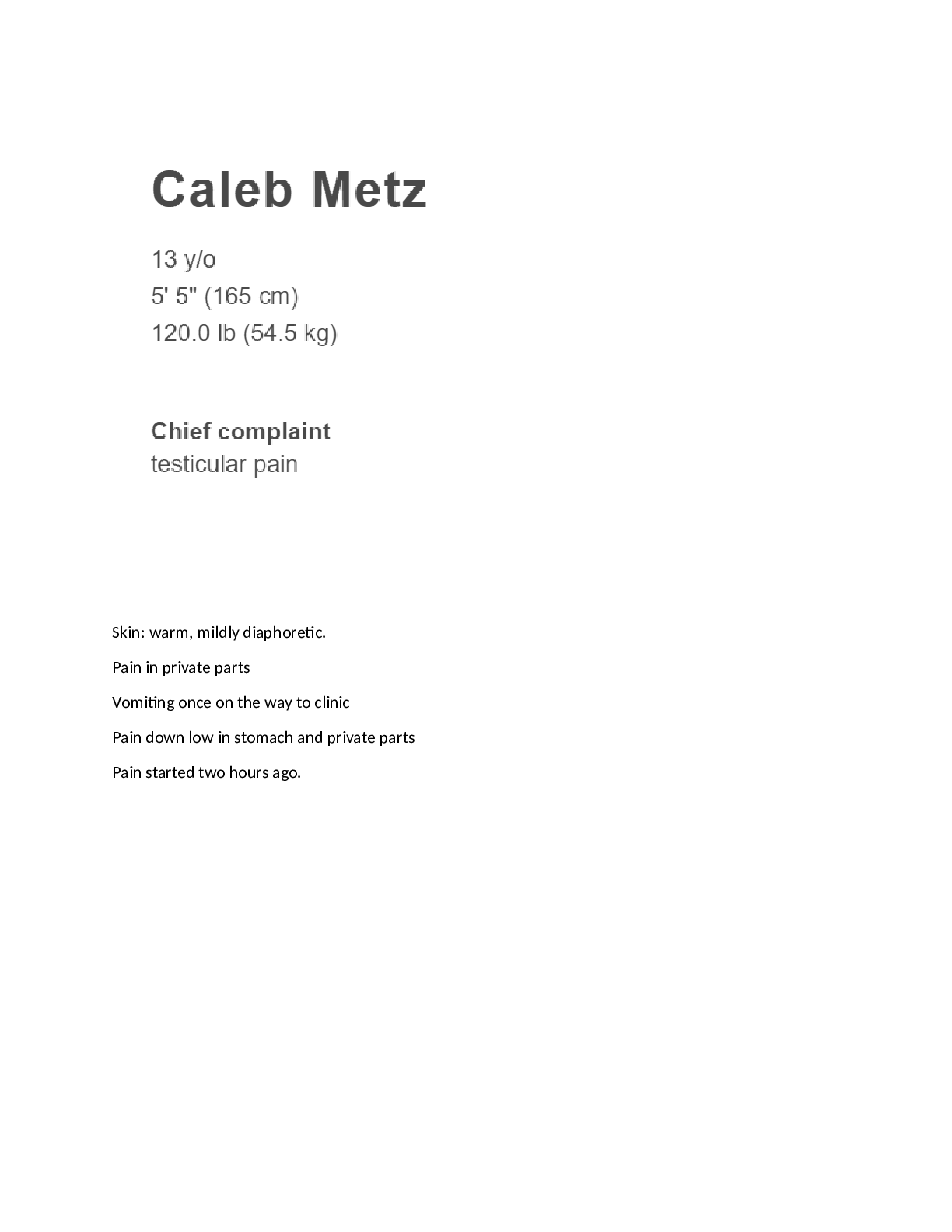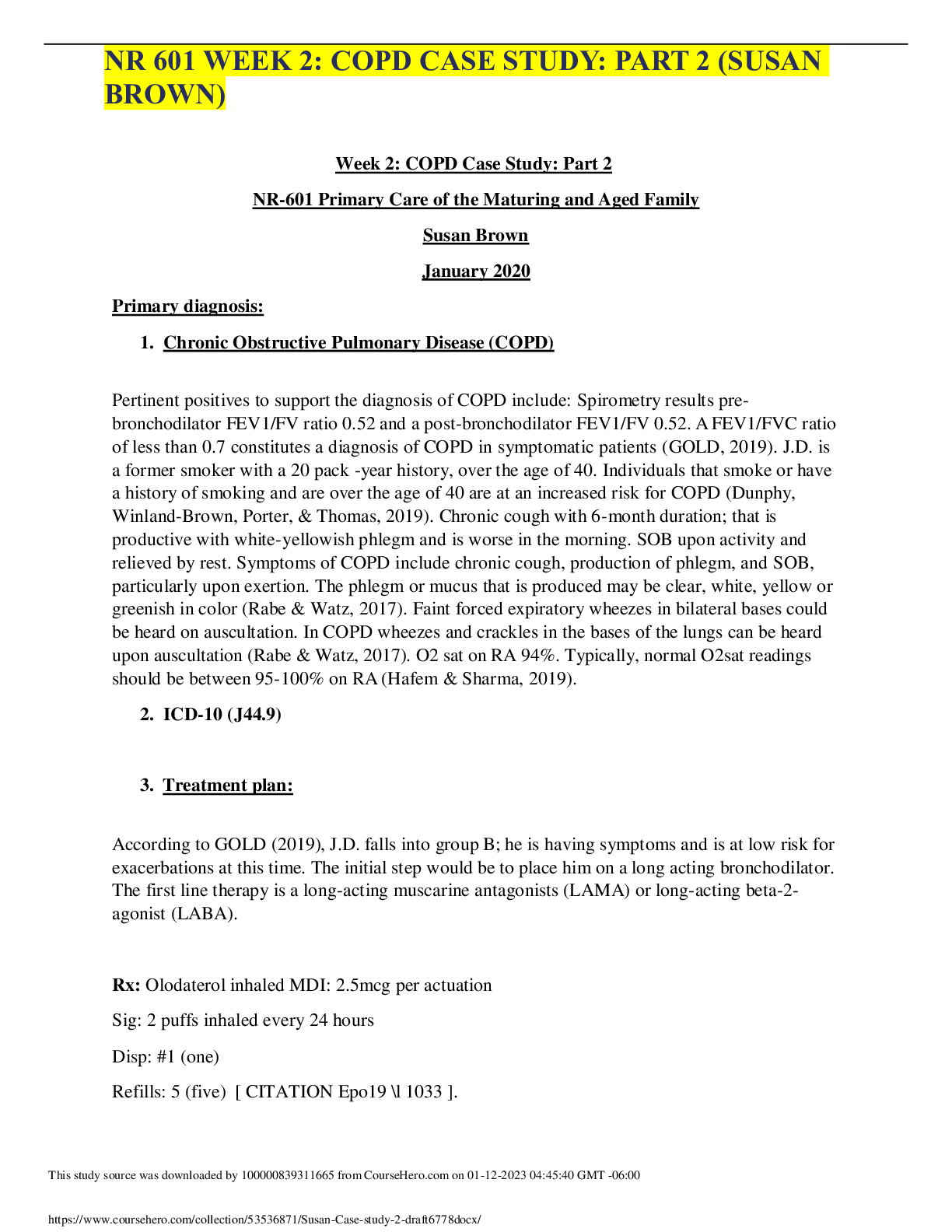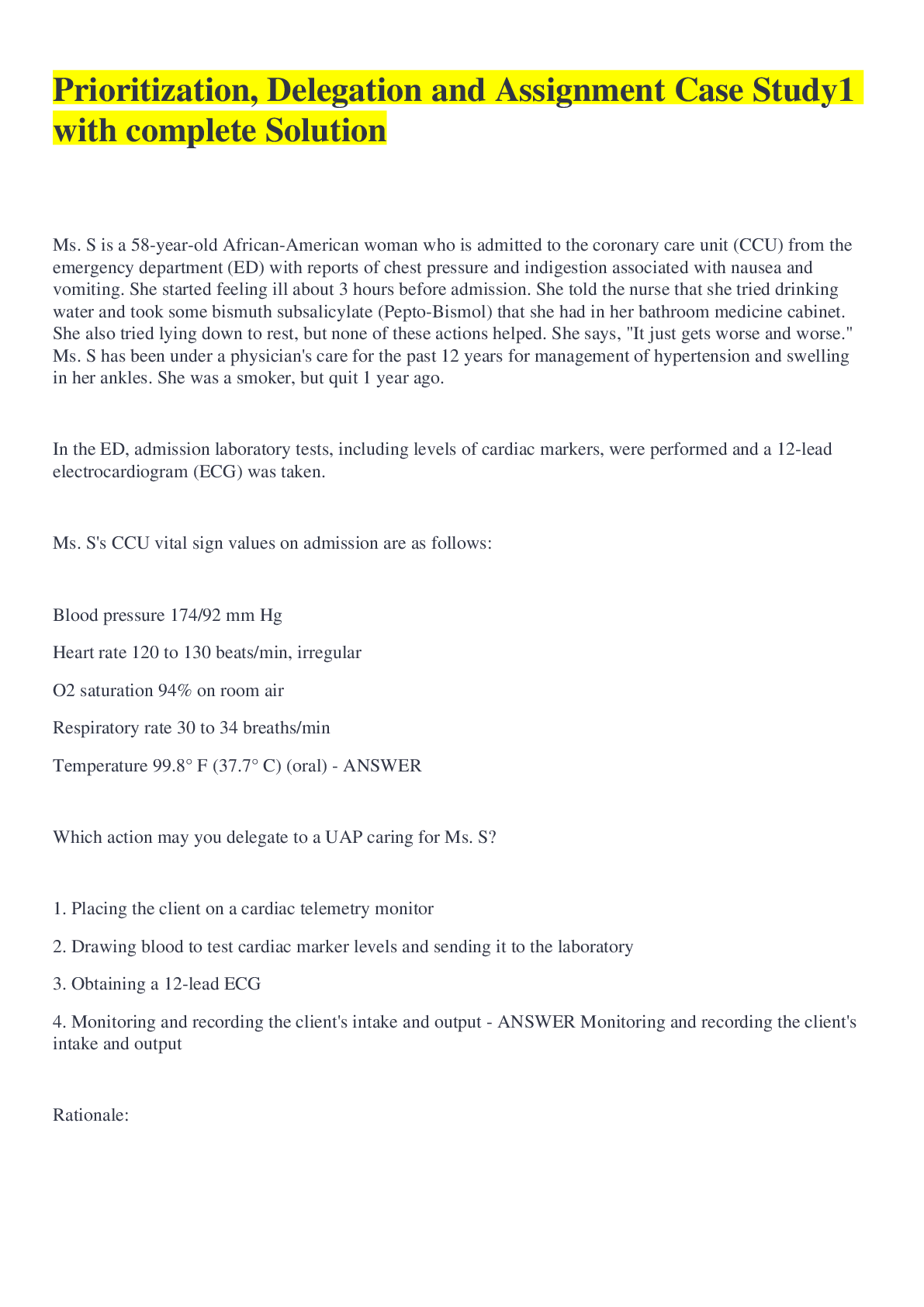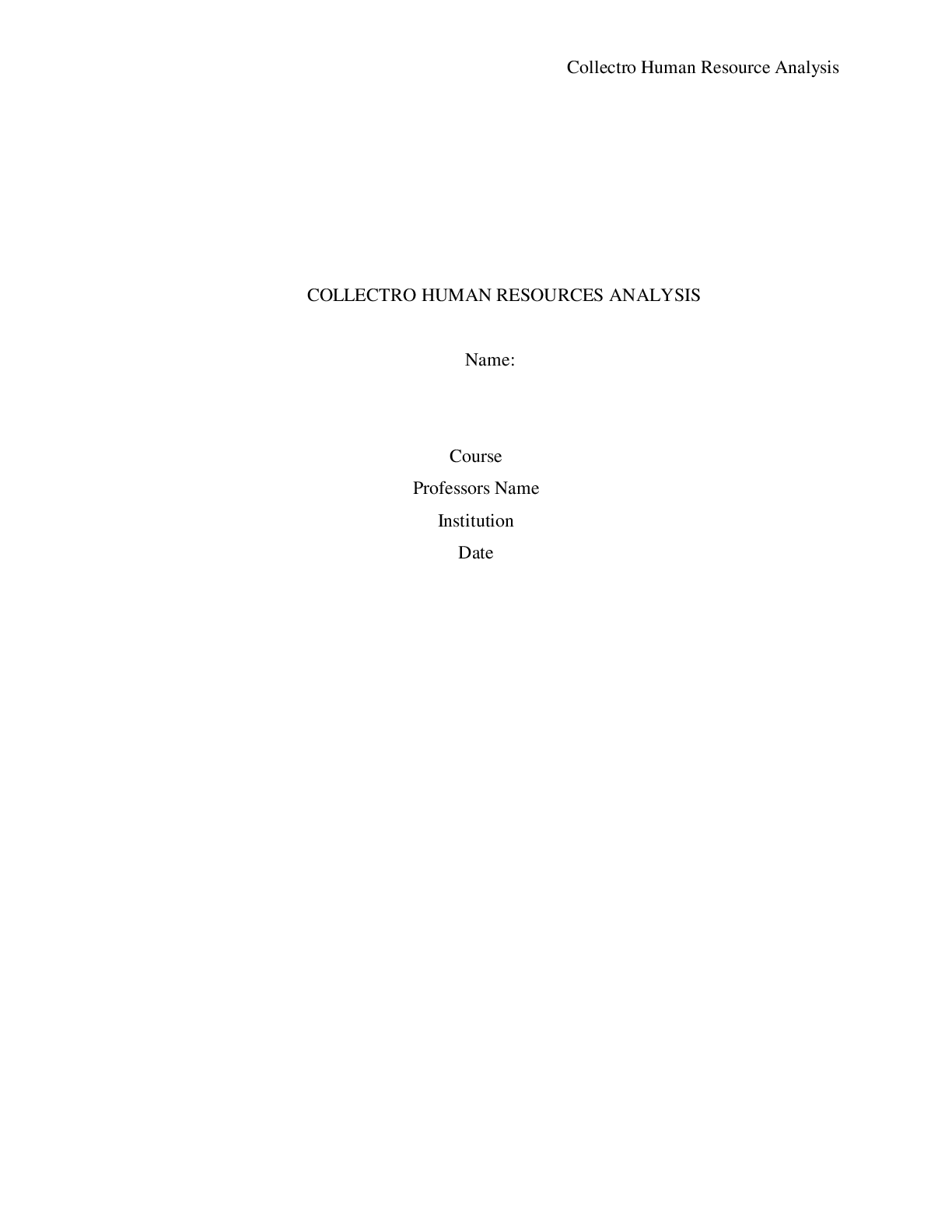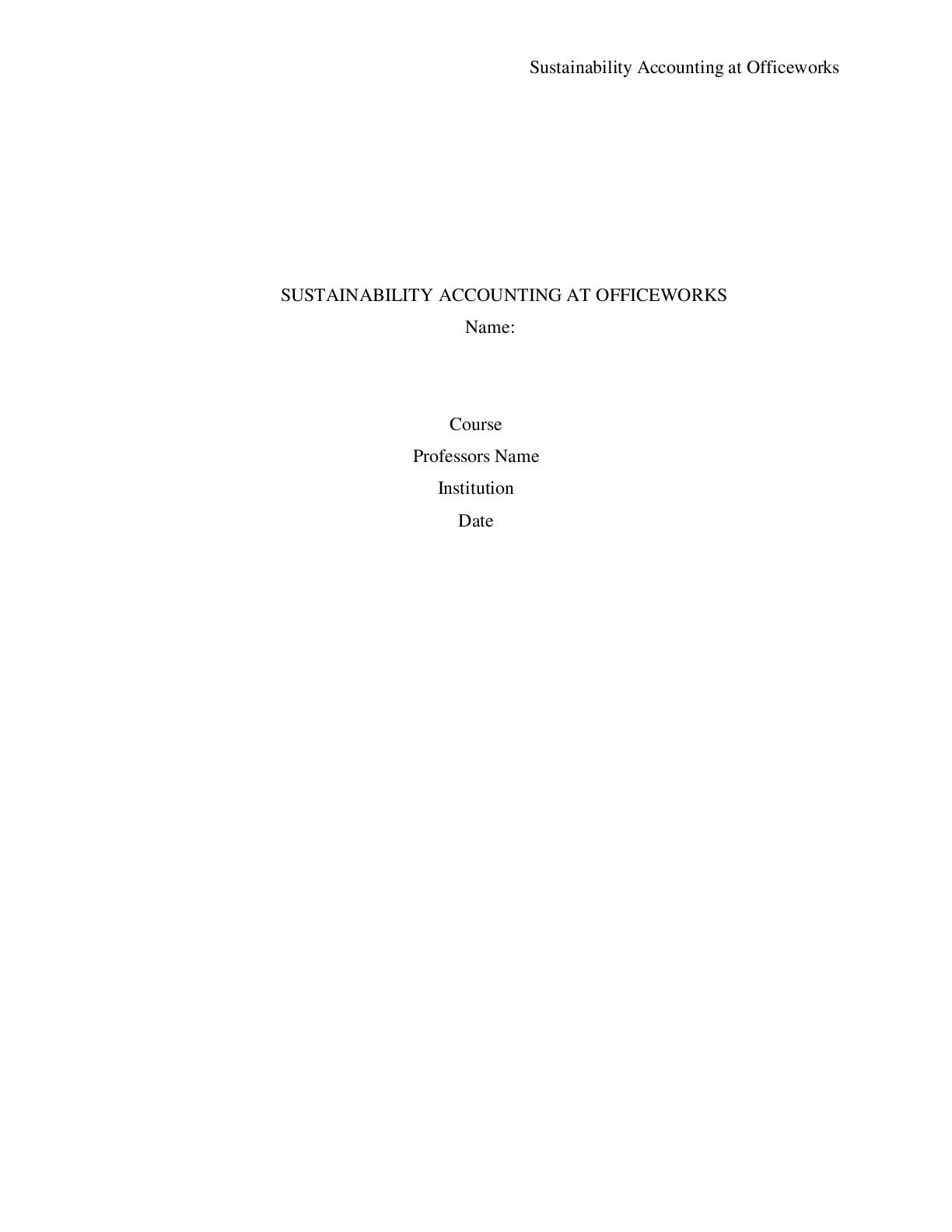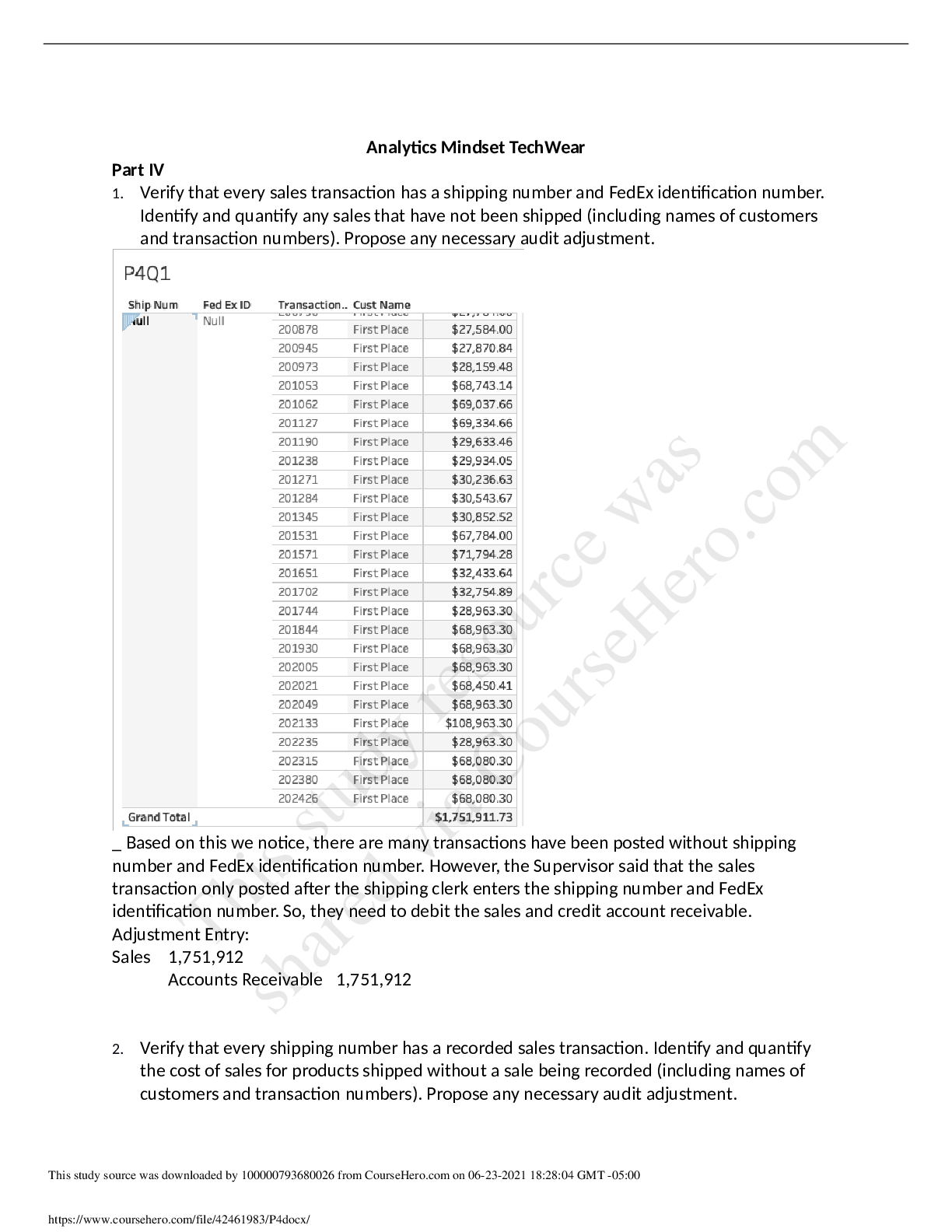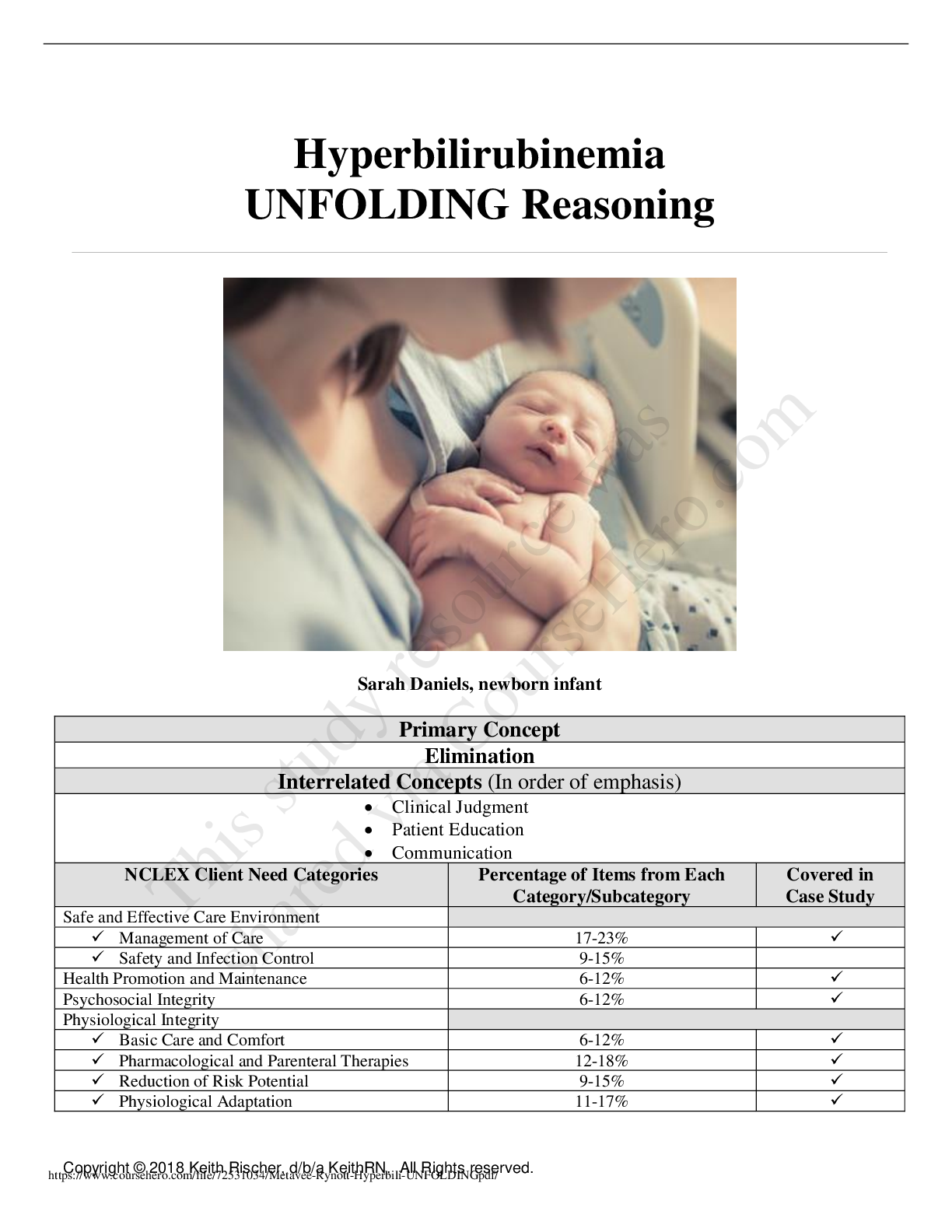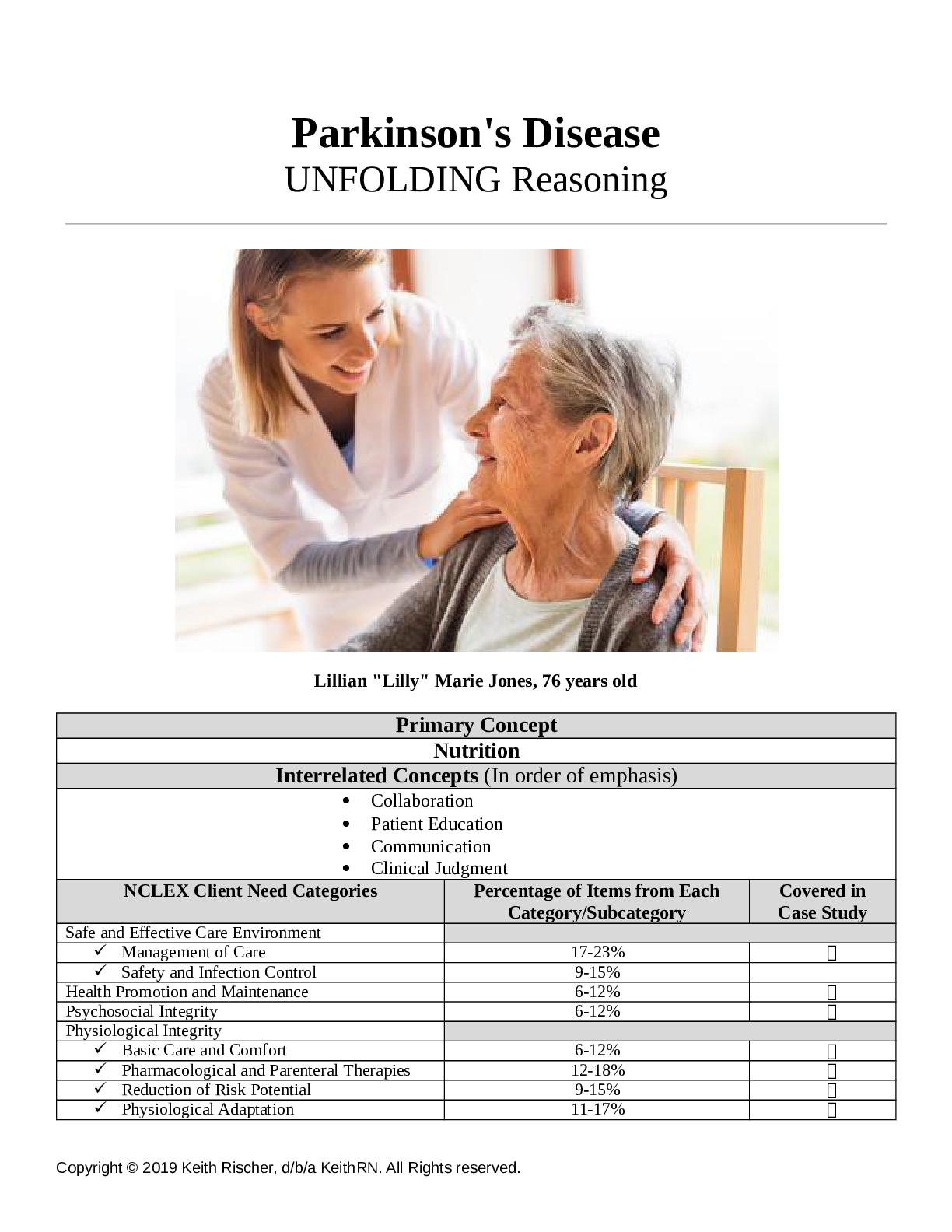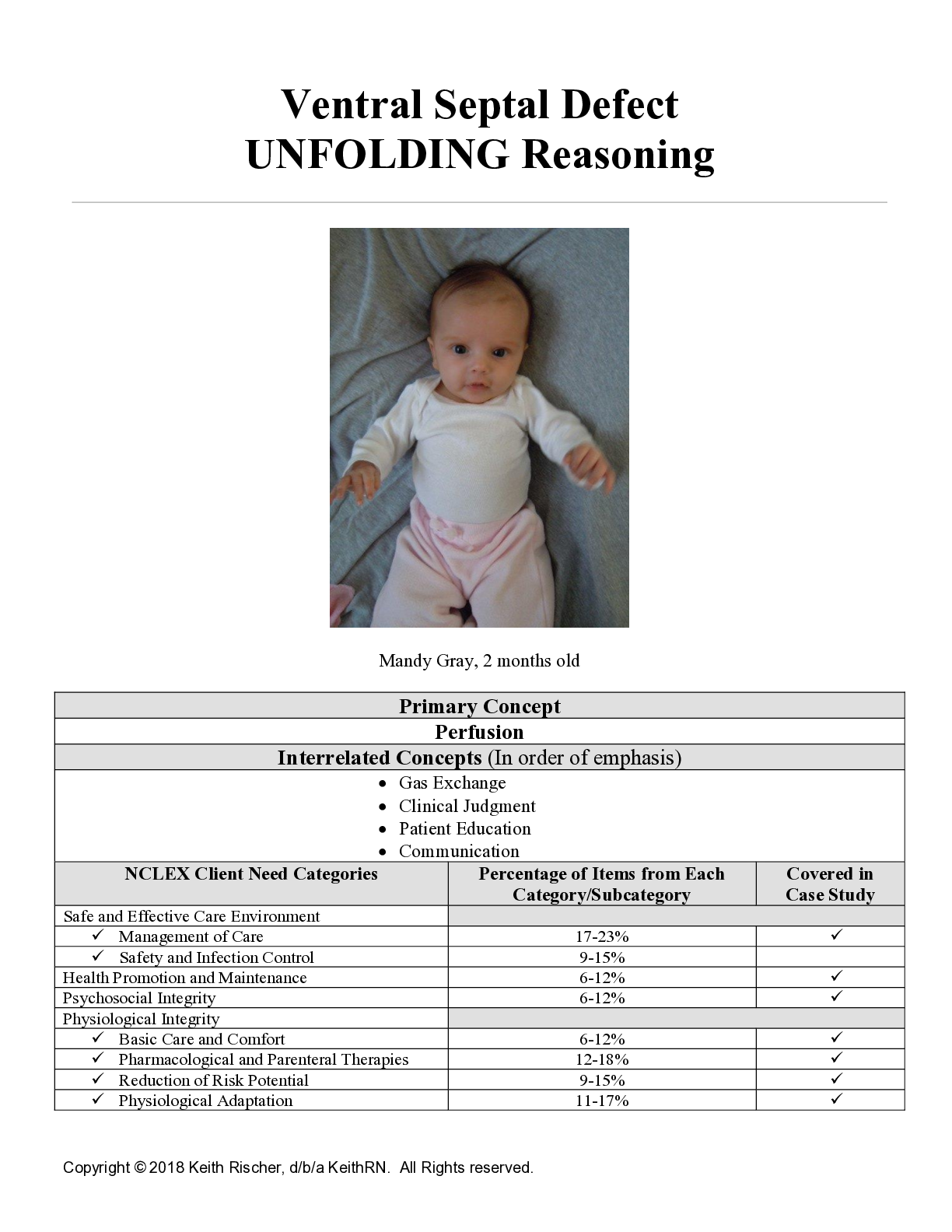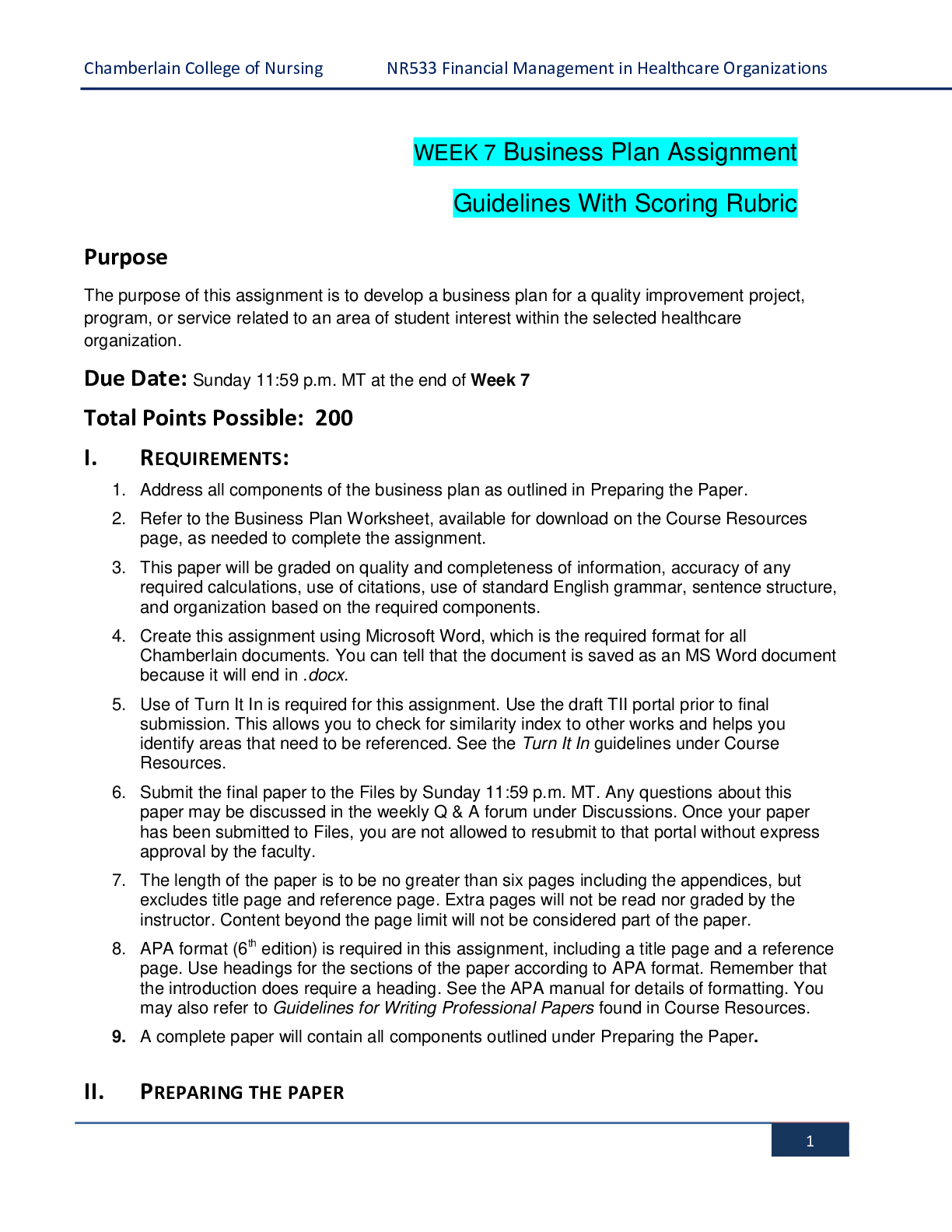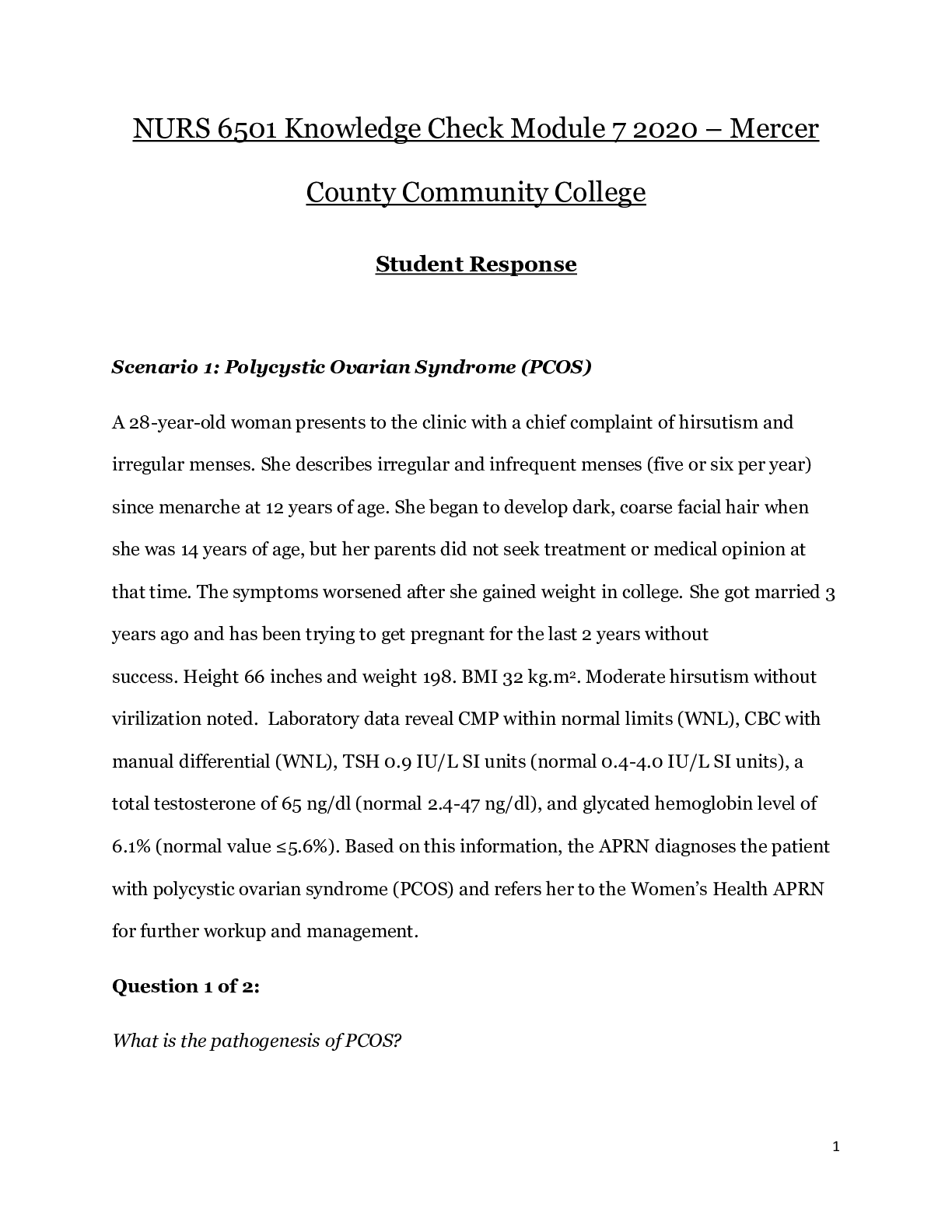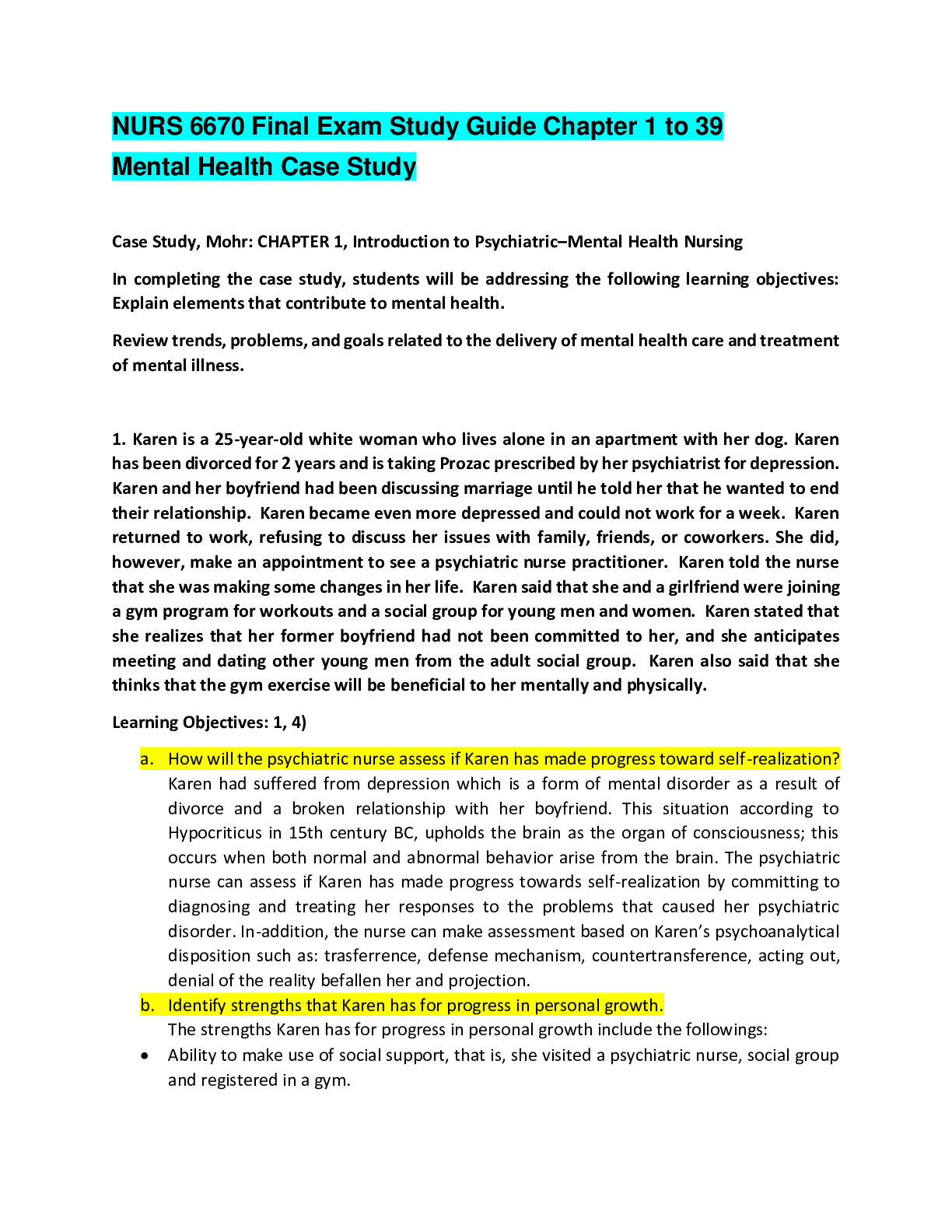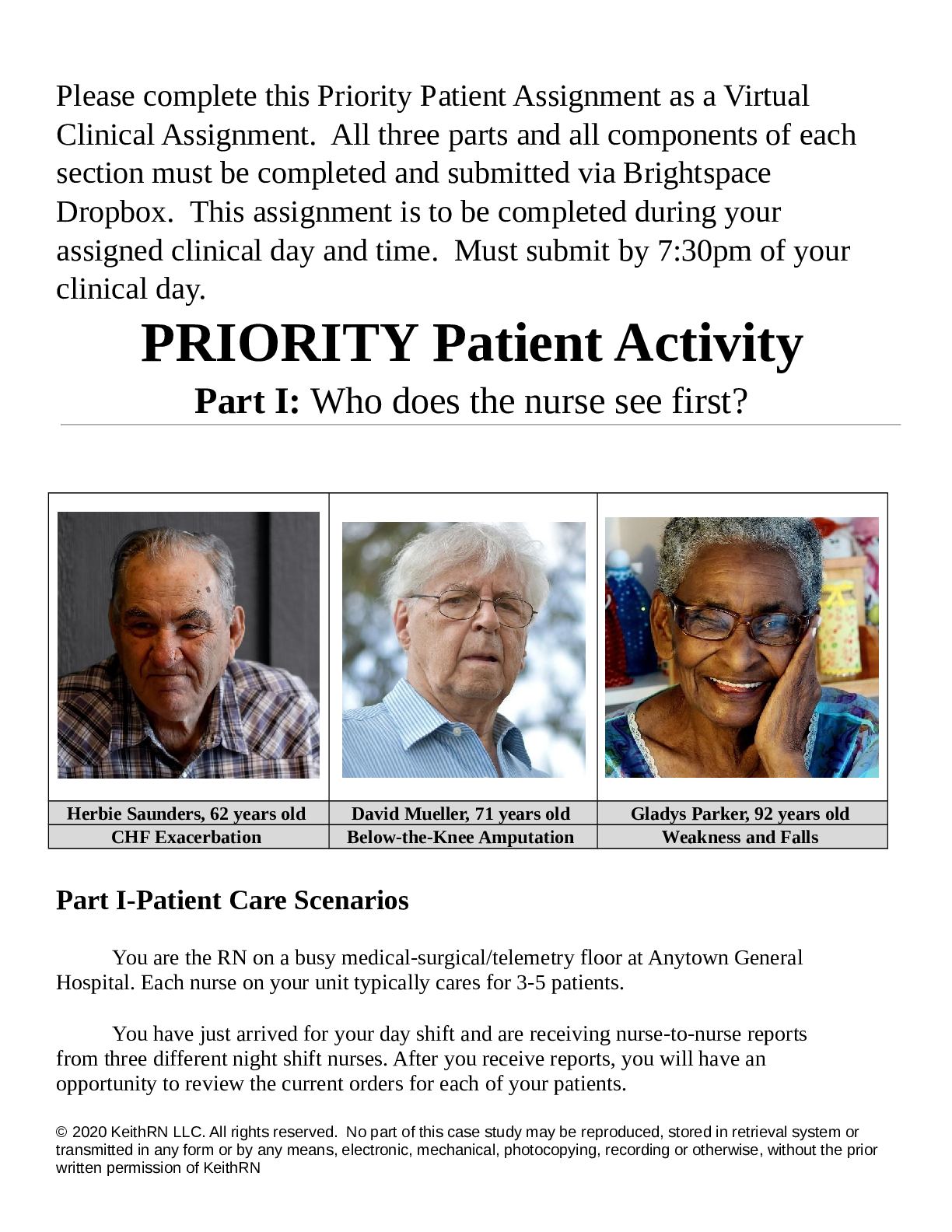*NURSING > CASE STUDY > Prioritization, Delegation and Assignment Case Study 2 with Rationale (Graded A+) (All)
Prioritization, Delegation and Assignment Case Study 2 with Rationale (Graded A+)
Document Content and Description Below
Mr. W is an 83-year-old man who was brought to the hospital from a long-term care facility by the paramedics after reporting severe dyspnea and shortness of breath. He has been experiencing cold like ... symptoms for the past 2 days. He has a productive cough with thick greenish sputum. When Mr. W awoke in the nursing home, he found that he was having difficulty breathing even after using his albuterol (Proventil) metered-dose inhaler (MDI). He appears very anxious and is in respiratory distress. His history includes chronic obstructive pulmonary disease (COPD) related to smoking 2 packs of cigarettes per day since he was 15 years old. Mr. W has been incontinent of urine and stool for the past 2 years. In the emergency department, the Mr. W undergoes chest radiography, and admission laboratory tests are performed, including electrolyte levels and a complete blood count. A sputum sample is sent to the laboratory for culture and sensitivity testing and Gram staining. Mr. W's vital sign values are as follows: Blood pressure 154/92 mm Hg Heart rate 118 beats/min O2 saturation 88% on 1 L/min oxygen by nasal cannula Respiratory rate 38 breaths/min Temperature 100.9° F (38.3° C) (oral) (Questions 3-14) Mr. W's arterial blood gas results include the following: pH, 7.37; arterial partial pressure of carbon dioxide (PaCO2), 55.4 mm Hg; arterial partial pressure of oxygen (PaO2), 51.2 mm Hg; bicarbonate (HCO3) level, 38 mEq/L. - ANSWER What is the priority nursing diagnosis for this patient? 1. Decreased Cardiac Output 2. Ineffective Airway Clearance 3. Risk for Electrolyte Imbalance 4. Anxiety - ANSWER Ineffective Airway Clearance Rationale: The patient's major problems at this time relate to airway and breathing. The patient's anxiety is most likely directly related to his breathing difficulty. An acid-base imbalance may result from the patient's breathing problem, but this is not the highest priority at the moment. Focus: Prioritization QSEN: Patient-Centered Care, Safety Concept: Gas Exchange The health care provider's orders for this patient include all of the following. Which intervention should you complete first? 1. Send an arterial blood gas sample to the laboratory. 2. Schedule pulmonary function tests. 3. Repeat chest radiography each morning. 4. Administer albuterol via MDI 2 puffs every 4 hours. - ANSWER Send an arterial blood gas sample to the laboratory. Rationale: Baseline arterial blood gas results are important in planning the care of this patient. The unit clerk can schedule the pulmonary function tests and chest radiography. The albuterol therapy is a routine order. Focus: Prioritization QSEN: Teamwork & Collaboration Concept: Clinical Judgment What is your interpretation of these results? 1. Compensated metabolic acidosis with hypoxemia 2. Compensated metabolic alkalosis with hypoxemia 3. Compensated respiratory acidosis with hypoxemia 4. Compensated respiratory alkalosis with hypoxemia - ANSWER Compensated respiratory acidosis with hypoxemia Rationale: The pH is on the low side of normal and the PaCO2 is elevated, which indicates an underlying respiratory acidosis. The HCO3 level is elevated, which indicates compensation. Both the PaO2 and the oxygen saturation levels are low, which points to hypoxemia. These blood gas results are typically expected when a patient has a chronic respiratory problem such as COPD. Focus: Prioritization, Knowledge QSEN: N/A Concept: Acid-Base Balance Based on the patient's arterial blood gas results, what are your priority actions at this time? (Select all that apply.) 1. Administer oxygen at 2 L/min via nasal cannula. 2. Initiate a rapid response. 3. Teach the patient how to cough and deep breathe. 4. Begin IV normal saline at 100 mL/hr. 5. Arrange a transfer to the intensive care unit (ICU). 6. Remind the patient to practice incentive spirometry every hour while awake. - ANSWER Administer oxygen at 2 L/min via nasal cannula. Initiate a rapid response. Teach the patient how to cough and deep breathe. Remind the patient to practice incentive spirometry every hour while awake. Rationale: The patient's major problem at this time is impaired gas exchange with hypoxemia. Strategies to compensate include administration of low-flow oxygen as well as interventions to improve gas exchange, such as having the patient cough and deep breathe and perform incentive spirometry. These strategies may improve the patient's condition and prevent the need to initiate a code and/or transfer to the ICU. A saline lock is a good idea, but giving the patient too much fluid may worsen his condition by producing a fluid overload. The patient's symptoms call for initiation of a rapid response to treat him now and prevent the need for a code. Focus: Prioritization QSEN: Patient-Centered Care, Safety Concept: Clinical Judgment Which intervention would you assign to an experienced LPN/LVN? 1. Drawing a sample for arterial blood gas determination 2. Administering albuterol by hand-held nebulizer 3. Measuring vital signs every 2 hours 4. Increasing oxygen delivery to 2 L/min via nasal cannula - ANSWER Increasing oxygen delivery to 2 L/min via nasal cannula Rationale: Increasing oxygen flow for a patient based on a physician's order is within the scope of practice of LPNs/LVNs. UAPs may measure vital signs. Arterial draws for laboratory tests are not within the LPN/LVN's scope of practice. Hand-held nebulizers are usually operated by respiratory therapists. Focus: Delegation, Supervision [Show More]
Last updated: 1 year ago
Preview 1 out of 10 pages

Reviews( 0 )
Document information
Connected school, study & course
About the document
Uploaded On
Sep 15, 2022
Number of pages
10
Written in
Additional information
This document has been written for:
Uploaded
Sep 15, 2022
Downloads
0
Views
18


